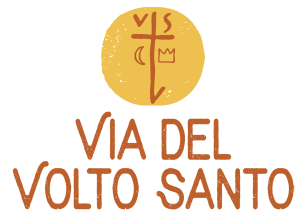Lunigiana
Via del Volto Santo
From Pontremoli to Lucca
During the Middle Ages and the modern age there were countless routes that crossed the Magra Valley which, located transversely to the Apennines, made it shorter and easier to cross, the always problematic, mountain range.
The main axis consisted of the Via Francigena that allowed you to reach Rome from northern Europe passing through the Cisa pass, also called Monte Bardone.
From this main route branched variants due to the changes that occurred in the territory (as a result of floods, landslides, or the presence of bridges) that could make one road easier instead of another. Some branches, on the other hand, made it easier to reach places of interest for the traveller. This is the case of Lucca, which on the Francigena was a popular stop especially for pilgrims. In fact, there is a precious image, the effigy of the Holy Face, that is, the depiction of Christ crucified according to the ancient representation of the living God.
A Crucifix not made by human hand according to tradition, whose presence in Lucca, in the cathedral of San Martino is narrated with a miracle: in the early Middle Ages the Cross, with numerous relics inside, would have arrived by an unmanned ship on the beach of Luni. From here, to resolve the dispute with the locals who aspired to keep it, it was placed on a wagon pulled by animals without a guide, therefore free to choose the destination and transported by them to Lucca. The image soon became the object of great veneration and many pilgrims heading to the tombs of the martyrs in Rome made a detour on the way to pass through Lucca. Hence the origin of the Way of the Holy Face.
Conventionally the itinerary, which detaches from the Francigena started from the Pieve di Sorano, a Romanesque building located in Filattiera, of which archaeological excavations have revealed the existence of a church here already in the eighth century. Indicating the parish churches as successive stages. The Via touches the Pieve di Venelia, then through those of Soliera and Offiano, it rises to Regnano to reach the pass where you could stop in the xenodochio of San Nicolò a Tea.
A variant passed through the Churches of Codiponte and San Lorenzo and through Minucciano, rejoined at Piazza al Serchio with the route that descended from Tea. In Garfagnana, in the Serchio valley, the route following the ancient Roman route of the Via Clodia touches San Donnino, Camporgiano, Castelnuovo Garfagnana, Gallicano, Borgo a Mozzano, Diecimo, Valdottavo, Sesto di Moriano to reach Lucca.
A path that has suffered many alterations due to the flooding of the Serchio River, along which it winded. Tt is attested in documentary sources a variant of half the coast on the right of the river; crossing the course of the waters with the ancient Devil’s Bridge (or Maddalena) from the large arch, located in Borgo a Mozzano, ascend to Corsagno, having reached the Pizzorne Plateau, descend to Matraia, then Segromigno to reach Lucca.
Here the image of the Holy Face, the Christ covered with a long black tunic, a polychrome wooden sculpture that recent studies have dated between the eighth and ninth centuries, is kept in the cathedral within a Renaissance marble temple by the Lucchese artist Matteo Civitali (1436-1502). The image still arouses much veneration in the city which is honoured, every year on the 13-14 September, with a great concurrence of the people, representatives of the numerous communities of Lucca and emigrants alike, the feast of the Exaltation of the Cross is celebrated.






LUNIGIANA BY WAY. PERCORSI A PIEDI IN BICICLETTA – COMUNICAZIONE E SEGNALETICA COORDINATA PER I PROGETTI 1. VIA DEL VOLTO SANTO – 2. CICLOVIA DELLA MAGRA. Progetto cofinanziato da FEASR – Regolamento (UE) 1305/2013 – PSR 2014/2020 Regione Toscana – Sottomisura 7.5 – sostegno a investimenti di fruizione pubblica in infrastrutture ricreative, informazioni turistiche e infrastrutture turistiche su piccola scala – infrastrutture ricreative pubbliche, centri di informazione turistica e infrastrutture turistiche di piccola scala.
